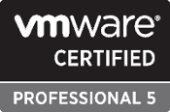This week Red Hat and Microsoft announced support of certain of their OSes as guests in their respective hypervisor implementations: Kernel Virtual Machine (KVM) and Hyper-V, respectively. This comes on the heels of Red Hat’s Enterprise Server 5.4 announcement last month.
KVM is Red Hat’s new hypervisor that leverages the Linux kernel to accelerate support for hardware and capabilities. It was Red Hat and AMD that first demonstrated live migration between AMD and Intel-based hypervisors using KVM late last year – then somewhat of a “Holy Grail” of hypervisor feats. With nearly a year of improvements and integration into their Red Hat Enterprise Server and Fedora “free and open source” offerings, Red Hat is almost ready to strike-out in a commercially viable way.
Microsoft now officially supports the following Red Hat guest operating systems in Hyper-V:
Red Hat Enterprise Linux 5.2, 5.3 and 5.4
Red Hat likewise officially supports the following Microsoft quest operating systems in KVM:
Windows Server 2003, 2008 and 2008 R2
The goal of the announcement and associated agreements between Red Hat and Microsoft was to enable a fully supported virtualization infrastructure for enterprises with Red Hat and Microsoft assets. As such, Microsoft and Red Hat are committed to supporting their respective products whether the hypervisor environment is all Red Hat, all Hyper-V or totally heterogeneous – mixing Red Hat KVM and Microsoft Hyper-V as necessary.
“With this announcement, Red Hat and Microsoft are ensuring their customers can resolve any issues related to Microsoft Windows on Red Hat Enterprise Virtualization, and Red Hat Enterprise Linux operating on Microsoft Hyper-V, regardless of whether the problem is related to the operating system or the virtualization implementation.”
Many in the industry cite Red Hat’s adoption of KVM as a step backwards [from Xen] requiring the re-development of significant amount of support code. However, Red Hat’s use of libvirt as a common management API has allowed the change to happen much more rapidly that critics assumptions had allowed. At Red Hat Summit 2009, key Red Hat officials were keen to point out just how tasty their “dog food” is:
Tim Burke, Red Hat’s vice president of engineering, said that Red Hat already runs much of its own infrastructure, including mail servers and file servers, on KVM, and is working hard to promote KVM with key original equipment manufacturer partners and vendors.
And Red Hat CTO Brian Stevens pointed out in his Summit keynote that with KVM inside the Linux kernel, Red Hat customers will no longer have to choose which applications to virtualize; virtualization will be everywhere and the tools to manage applications will be the same as those used to manage virtualized guests.
For system integrators and virtual infrastructure practices, Red Hat’s play is creating opportunities for differentiation. With a focus on light-weight, high-performance, I/O-driven virtualization applications and no need to support years-old established processes that are dragging on Xen and VMware, KVM stands to leap-frog the competition in the short term.
SOLORI’s Take: This news is good for all Red Hat and Microsoft customers alike. Indeed, it shows that Microsoft realizes that its licenses are being sold into the enterprise whether or not they run on physical hardware. With 20+:1 consolidation ratios now common, that represents a 5:1 license to hardware sale for Microsoft, regardless of the hypervisor. With KVM’s demonstrated CPU agnostic migration capabilities, this opens the door to an even more diverse virtualization infrastructure than ever before.
On the Red Hat side, it demonstrates how rapidly Red Hat has matured its offering following the shift to KVM earlier this year. While KVM is new to Red Hat, it is not new to Linux or aggressive early adopters since being added to the Linux kernel as of 2.6.20 back in September of 2007. With support already in active projects like ConVirt (VM life cycle management), OpenNebula (cloud administration tools), Ganeti, and Enomaly’s Elastic Computing Platform, the game of catch-up for Red Hat and KVM is very likely to be a short one.






